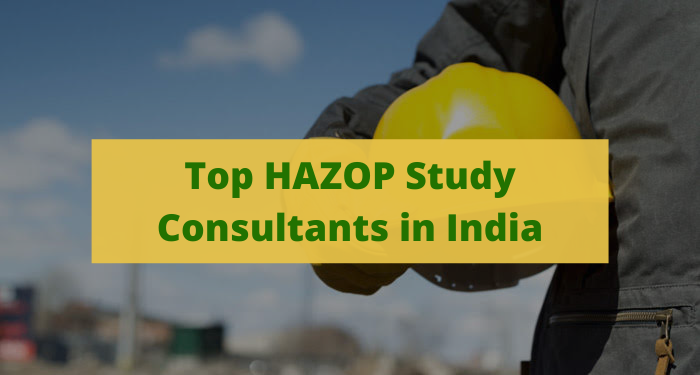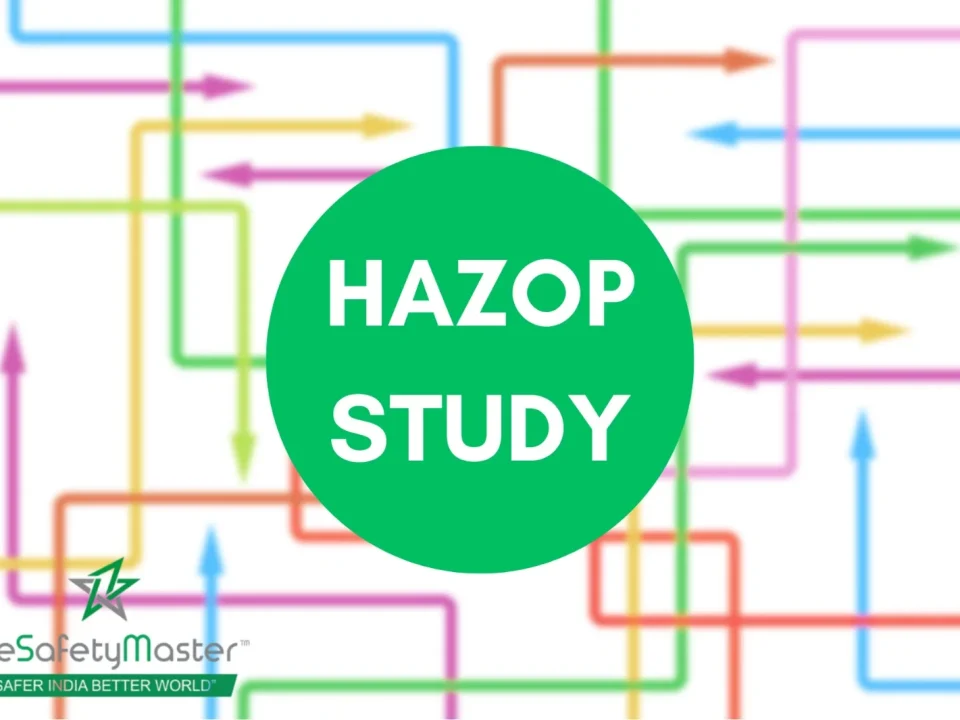HAZOP and QRA Study by TheSafetyMaster

Emerging Trends in Safety Software: India’s Tech-Driven Safety Revolution
August 18, 2023Industrial Hygiene Assessment and Environment Monitoring services by TheSafetyMaster
August 19, 2023Imagine a world where safety is not just a priority, but an obsession. A world where every potential risk is meticulously analyzed and mitigated before it becomes a threat. This is the realm of HAZOP and QRA studies, two robust methodologies that have revolutionized the field of safety engineering.
In this article, we will delve into the intricacies of HAZOP (Hazard and Operability) studies and QRA (Quantitative Risk Assessment) to unveil their true potential in safeguarding our lives and environments. Whether you are an industry professional seeking to enhance your knowledge or simply someone intrigued by the science behind risk assessment, sit back and prepare to be captivated.
The Power of HAZOP and QRA Studies
HAZOP (Hazard and Operability Study) and QRA (Quantitative Risk Assessment) are two powerful tools that have the potential to revolutionize safety practices across industries. These studies serve as pillars upon which organizations can build a solid foundation for risk management, enabling them to identify potential hazards, assess risks, and ultimately enhance the safety of their operations.
HAZOP studies allow for a systematic examination of processes, identifying deviations from design intent that may lead to hazardous situations. By meticulously scrutinizing each element and exploring various possible deviations, HAZOP studies help organizations uncover risks they might not have considered otherwise. This method provides a comprehensive understanding of potential hazards and allows proactive measures to be implemented, preventing accidents before they occur.
Understanding the Basics: What is HAZOP?
When it comes to ensuring safety in complex industrial processes, one term that stands out is HAZOP – Hazard and Operability Study. HAZOP is a systematic and structured approach used to identify, assess, and mitigate potential hazards and operational issues in various industries such as oil and gas, chemical manufacturing, and pharmaceuticals.
This powerful technique involves a multidisciplinary team of experts meticulously analyzing every element of a process or system to uncover deviations from the intended design. By scrutinizing these deviations, HAZOP helps identify potential risks that may lead to accidents, environmental harm, or financial losses. Through its detailed examination of each component’s purpose, parameters, deviations, and consequences, HAZOP provides invaluable insights into improving safety measures.
The world we live in is full of complexities and uncertainties, especially when it comes to ensuring safety in various industries. Every day, countless lives and valuable assets are at stake, making it imperative for organizations to adopt robust strategies that minimize risks and prevent disasters. This is where HAZOP (Hazard and Operability) and QRA (Quantitative Risk Assessment) studies come into play.
In this highly informative article, we will delve into the fascinating realm of HAZOP and QRA studies conducted by TheSafetyMaster. We will explore the power of these studies in identifying potential hazards, evaluating risks, and designing effective preventive measures. Brace yourself for a journey that will open your eyes to the immense impact these studies can have on safety practices across industries.
Step-by-Step Guide: Conducting a HAZOP Study
Embarking on a HAZOP study is like embarking on a journey to uncover hidden treasures of safety and efficiency. With meticulous planning and attention to detail, this step-by-step guide will navigate you through the intricacies of conducting a successful HAZOP study.
Step 1: Define the Scope and Objectives: Lay the foundation for your study by clearly defining the scope and objectives. Identify the system, process, or plant that will undergo analysis. Determine whether you are aiming to identify potential hazards, evaluate existing safeguards, or optimize operations.
Step 2: Assemble the Dream Team: Like a symphony conductor assembling talented musicians, gather a multidisciplinary team with diverse expertise in engineering, operations, maintenance, safety, and risk assessment. This collaborative approach ensures comprehensive analysis from various perspectives.
Step 3: Break It Down: Divide the system into manageable sections or nodes for examination during the study. Each node should represent an individual component or subsystem that can be systematically analyzed for deviations from design intent.
Step 4: Brainstorm Hazards: Let your creative juices flow as you brainstorm potential hazards associated with each node. Use guide words like “no,” “more,” “less,” “as well as,” and “part of” to stimulate out-of-the-box thinking among team members. This process encourages innovative ideas and uncovers risks that may have otherwise gone unnoticed.
Step 5: Analyze Deviations: Once potential hazardsUnleashing the Potential: How QRA Complements HAZOP
When it comes to ensuring safety in complex industrial processes, a holistic approach is essential. This is where Quantitative Risk Assessment (QRA) steps in to complement the Hazard and Operability Study (HAZOP). While HAZOP focuses on identifying potential hazards and operational issues, QRA takes it a step further by quantifying the risks associated with these hazards.
QRA provides a valuable tool for decision-makers by estimating the likelihood and consequences of various scenarios. By conducting detailed calculations, including probabilistic modeling and statistical analysis, QRA enables organizations to prioritize risk control measures effectively. It not only helps in understanding potential loss scenarios but also assists in developing robust emergency response plans.
Real-Life Examples: HAZOP and QRA in Action
Now that we have explored the theoretical aspects of HAZOP and QRA studies, let us delve into some real-life examples that highlight their practical application and effectiveness. These case studies serve as powerful reminders of how these techniques can revolutionize safety practices and enhance risk management in various industries.
Imagine a chemical processing plant where a HAZOP study was carried out to evaluate potential hazards. By meticulously analyzing every aspect of the process, from raw materials handling to equipment operation, the study identified a critical deviation in the control system. Through swift corrective action based on the HAZOP findings, an impending catastrophe was averted, protecting both human lives and the environment.
The Benefits of HAZOP and QRA Studies: A Comprehensive Overview
Embarking on HAZOP and QRA studies can yield a plethora of invaluable benefits, revolutionizing safety practices and ultimately safeguarding organizations and their personnel in the most comprehensive manner possible. These studies act as a shield against potential hazards by identifying vulnerabilities, analyzing risks, and providing effective mitigation strategies. By proactively addressing safety concerns, companies can not only protect their employees but also enhance productivity, reduce downtime, and ensure regulatory compliance.
One of the primary advantages of HAZOP studies is their ability to uncover hidden risks that might be overlooked in routine assessments. Through systematic examination of process operations, these studies help identify potential deviations from normal conditions that could lead to accidents or failures. This comprehensive approach ensures that no stone is left unturned when it comes to safety analysis.
Overcoming Challenges: Tips and Tricks for Successful Implementation
Implementing HAZOP and QRA studies may seem daunting, but with the right approach, it can become a seamless part of your safety management system. Here are some valuable tips and tricks to navigate the challenges that may arise during the implementation process:
1. Foster a Culture of Collaboration: Encourage open communication among team members involved in the study. Emphasize the importance of sharing ideas and perspectives, as this will lead to a more comprehensive analysis. By fostering collaboration, you create an environment where everyone feels valued and heard, ultimately enhancing the quality of your HAZOP and QRA studies.
2. Embrace Continuous Learning: Safety practices evolve constantly, making it crucial to stay abreast of the latest developments in HAZOP and QRA methodologies. Encourage your team to attend workshops, conferences, or training sessions conducted by industry experts. By embracing continuous learning, you ensure that you are equipped with up-to-date knowledge and techniques needed for successful implementation.
3. Utilize Technology as an Ally: Leverage technology tools that streamline the HAZOP and QRA processes to maximize efficiency while minimizing errors. Sophisticated software solutions can help in data analysis, risk calculations, scenario modeling, and documentation management. By harnessing technology’s power effectively, you can save time and resources while enhancing overall safety performance.
4. Communicate Findings Effectively: The success of any study lies not only in its execution but also in how well its findings are communicated throughout the organization. Utilize clear language when presenting results to ensure easy comprehension by stakeholders at all levels within your
Inspiring Change: How HAZOP and QRA Can Revolutionize Safety Practices
When it comes to safety practices, organizations are constantly seeking ways to elevate their standards and protect their employees from potential hazards. This is where the power of HAZOP (Hazard and Operability) and QRA (Quantitative Risk Assessment) studies truly shines. These comprehensive methodologies have the potential to revolutionize safety practices by providing invaluable insights, identifying potential risks, and driving proactive decision-making.
By conducting thorough HAZOP studies, organizations can uncover hidden hazards within their processes, systems, and operations. This allows them to develop tailored strategies that mitigate risks before they escalate into accidents or incidents. Additionally, when combined with QRA techniques, the analysis becomes more robust as quantitative data helps stakeholders understand the likelihood of different scenarios occurring and the potential consequences associated with each.
Imagine a future where workplaces embrace these studies as a cornerstone of their safety programs. It’s a future where accidents are minimized not only because regulations demand it but because organizations are genuinely committed to protecting their workforce. By inspiring change through embracing HAZOP and QRA methodologies, we can create a culture of safety that permeates every aspect of an organization – from the boardroom to the shop floor – ensuring that everyone feels empowered to take proactive measures in preventing accidents and promoting well-being.
Future-proofing Safety: Exploring the Latest Trends in HAZOP and QRA
As technology continues to advance at an unprecedented pace, the field of safety engineering must also adapt to keep up with the ever-evolving risks and challenges. In the realm of HAZOP (Hazard and Operability Study) and QRA (Quantitative Risk Assessment), professionals are constantly exploring innovative approaches to maximize safety and minimize potential hazards.
One prominent trend that is shaping the future of safety is the integration of artificial intelligence (AI) into HAZOP and QRA processes. By leveraging AI technologies, engineers can streamline data analysis, identify patterns, and detect potential risks with greater efficiency. Machine learning algorithms have proven to be invaluable in predicting failures, optimizing maintenance schedules, and ultimately preventing accidents before they occur. This paradigm shift towards intelligent systems not only enhances our ability to safeguard industrial processes but also lays a strong foundation for a safer future.
Conclusion
In conclusion, HAZOP and QRA studies are powerful tools that enable organizations to proactively identify and mitigate potential risks, ensuring the safety and well-being of both personnel and assets. By diligently conducting thorough analyses and implementing effective risk reduction strategies, companies can create a culture of safety that permeates every aspect of their operations. As we look towards the future, it is encouraging to see the continued advancements in HAZOP and QRA methodologies, which promise to further enhance safety practices across industries. Let us embrace these invaluable studies as catalysts for positive change, leading us towards a safer and more secure tomorrow.
Sanjeev Paruthi
TSM TheSafetyMaster® Private Limited
Unit No 221-451-452, SPL1/J, 2nd & 4th Floor, Sunsquare Plaza Complex, RIICO Chowk, Bhiwadi 301019, Rajasthan, India
Phone: +91 1493 22 0093
Mobile: +91 7665231743/9413882016
Email: info@thesafetymaster.com




